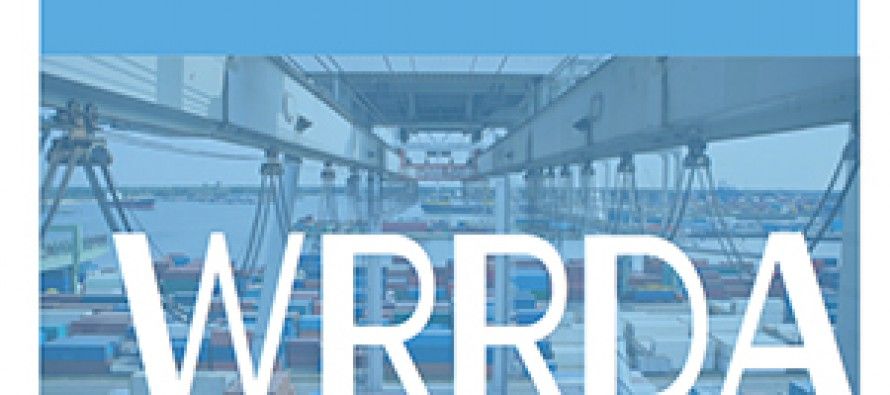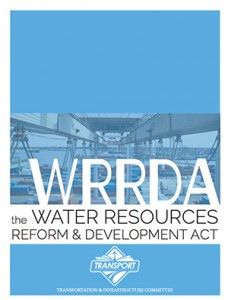Wild card water bill surfaces with no earmarks

 Is it possible to imagine this kind of water bill coming out of Congress? It would:
Is it possible to imagine this kind of water bill coming out of Congress? It would:
- Include no political earmarks;
- Streamline environmental clearances for water projects;
- De-authorize $12 billion of backlogged dormant water projects;
- Take the selection of projects away from the U.S. Army Corps of Engineers;
- Reduce the processing time from 10 or 15 years to three years for the U.S. Army Corps of Engineers to undertake a water project study;
- Eliminate duplicative environmental and other studies;
- Dispose of excess property from prior projects;
- Include a wild card provision allowing up to 15 new unspecified projects that could be partly funded by “contributions from non-federal interests” for harbors, flood control and other purposes;
- Promote water infrastructure public-private partnership program.
This actually is what the U.S. House of Representatives claims its new Water Resources Reform and Development Act of 2013, HR 3080, would accomplish. A brochure explaining the bill can be found here; the full text is here.
The bill would need to be combined with S. 601 in the U.S. Senate and signed by President Obama before it could become law. But the bill had overwhelming bipartisan support in the House on a vote of 417 to 3 this past week. A major difficulty in merging and approving both bills will likely depend on whether projects can still be selected by the U.S. Army Corps of Engineers as provided in S. 601, or by the House as provided in HR 3080.
What California would get
In a nutshell, here is what California would get out of HR 3080:
- The bill authorizes $1 billion federal share out of $1.4 billion project for new levee improvements to protect the Natomas area of Sacramento from flooding. The Natomas Flood Protection Project is a pet project of Sen. Barbara Boxer and Rep. Doris Matsui, both California Democrats. Natomas is considered by the U.S. Army Corps of Engineers the most at-risk area in the nation for flooding.
- $43 million for improving the San Clemente shoreline in the district of Rep. Darrell Issa’s, R-Vista.
What California would lose
And here is what California would lose from provisions in Title III of the bill to de-authorize $12 billion in funding for previously approved water projects for which there is lack of local support or federal resources:
- The Walnut Creek flood protection project authorized under the Flood Control Act of 1960, including the upstream extent along Pacheco Creek;
- The Walnut Creek flood protection project authorized under the Flood Control Act of 1960, consisting of culvert on San Ramon Creek
Natomas land speculation
Natomas is an under-developed area of northwest Sacramento. Half a dozen land developers own the 10,000-acre section of Natomas called “Natomas Joint Vision.”
Because of the potential liberation of the land from flooding, Natomas could reportedly see land values climb 300 fold. What Sacramento also is getting out of HR 3080 is land for the next housing cycle worth billions of dollars.
No San Joaquin River Restoration Project funding
Perhaps more importantly, there is no authorization of additional funding for Feinstein’s $1 billion San Joaquin River Restoration Project. Funding approval for this project came only in 2009-10, when Democrats had the presidency, the House and a supermajority in the Senate.
But continued funding for the project has been stymied since Republicans took back control of the House in 2011. The San Joaquin River Restoration Program has been funded by $200 million in state water bonds and the diversion of funds from added water charges on farmers from the Federal Central Valley Project.
Opposition
Taxpayers for Common Sense has opposed HR 3080 because “the legislation contains several provisions that would sacrifice the pursuit of water projects benefitting national interest in order to advance more parochial, narrow, and potentially lower priority projects.”
A bone of contention for the group is that the criteria for calculating flood damage reduction have been expanded so that federal tax dollars are being spent to achieve local and regional benefits, not national interests. This might be called a backdoor earmark.
The Heritage Foundation states that HR 3080 attempts greater reforms than the Senate’s S. 601 bill. Heritage has not opposed HR 3080.
Wildcard provision
Probably the most intriguing aspect of HR 3080 is its wildcard provision to undertake unspecified projects with contributions from “non-federal interests.” California has recently delegated the environmental clearance portion of its High-Speed Rail Project to the federal government to circumvent the “project killer” provisions of the California Environmental Quality Act. This leaves open whether the environmental portion of California’s other water projects — the proposed Delta Tunnels and the Bay Delta Conservation Plan — could also be folded under federal control to escape years of litigation.
In a Congress that has a public image as divided and gridlocked over the federal debt, HR 3080 shows that bipartisanship still exists, especially when it comes to water projects loaded with speculative real estate potential.
Related Articles
Why CA has an affordable housing crisis
What a long strange trip it’s been for the Pebble Beach Company since it unveiled its Del Monte Forest development
Pension Funds' Odd Incentives
OCT. 12, 2010 By DAVE ROBERTS Billionaire investor Warren Buffett has compared investing in the stock market to gambling in
Auditor: State’s 12 largest cities all at financial risk
According to a new website run by California State Auditor Elaine Howle and her staff, the dozen most populated cities




